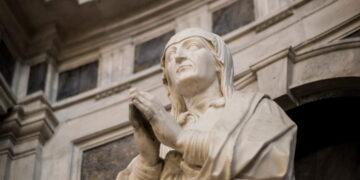Contents
Questo articolo è disponibile anche in:
Easter is one of the oldest and most solemn holidays, both for Christianity and Judaism. In the past it was also a pagan feast, from which some symbols have been copied and perpetuated in the Christian tradition today.
However, each tradition has its own peculiarities and history. So, we will have a brief look at the characteristics of Christian Easter, split into Catholic and Orthodox, then explore the Jewish Easter and, finally, the pagan one.
The Catholic Easter
Catholic Easter commemorates the resurrection of Christ and is a moveable feast as it is celebrated on the first Sunday following the full moon of the Spring Equinox. Its annual frequency, therefore, changes, as it occurs in the period between 22 March and 25 April. In 2024 it will be on March 31st.
The ancient origins of Christian Easter are linked to the Jewish tradition, prior to the birth of Christ. Actually, some symbols, such as the lamb, the blood, and the dove, are shared by both religions, even if they acquire different meanings. In the Christian tradition, the lamb, for instance, becomes the symbol of Christ’s sacrifice, while in the Jewish one it is linked to the liberation of the Jews from slavery in Egypt.
The first evidence of Christian Easter dates back to the 2nd-3rd centuries AD. C., during a long and controversial issue on the date of celebration between the Eastern and Western Churches. In Asia, in fact, Easter was celebrated on the day of Christ’s death, the 15th of the month of Nissan in the Jewish calendar, always on different days of the week; in the West, instead, other ideas prevailed. It was the Council of Nicaea in 325 that officially established Sunday as Easter day throughout the Christian community.

Source: Nicola (Wikimedia Commons); license: https://creativecommons.org/licenses/by/2.0/deed.en.
Today, many rites are connected to Easter, including the obligation of sacramental confession to be performed at least once during the Easter period, as well as the custom of giving oneself eggs and consuming lamb and dove-shaped cakes or focaccias.
The Orthodox Christian Easter
Orthodox Christian Easter celebrations also take place on the first Sunday following the first full moon of Spring, as for Catholic Easter. However, unlike the latter, the Orthodox Church uses the Julian calendar, which replaces the Gregorian one introduced by Pope Gregory XIII in the year 1582. This leads to a mismatch between the dates of the two Christian Easters (although it may happen that they coincide) because the day of celebration for the Orthodox Church is between 4 April and 8 May. This year Orthodox Easter will fall on May 5.
Just as for Catholic Easter, the resurrection of Jesus Christ is also celebrated in Orthodox Christian Easter. However, there are important differences. Holy Week, firstly, does not begin with Palm Sunday, familiar to Catholics, but rather with Willow Sunday; furthermore, a strict fast must be followed during which the faithful are required to give up some foods.
The countries in which Orthodox Easter is celebrated include: Cyprus, Greece, the Republic of Macedonia, Bulgaria, Romania, Lebanon, Russia, and Ukraine.

A characteristic tradition of Orthodox Easter consists in the preparation and decoration of Easter eggs, which become true works of art, known as pysanka. Common among the Slavic populations, they are cooked and subsequently coloured with particular artistic techniques based on natural colours and hot wax. Various symbols, geometric and floral motifs are reproduced on them.
On this liturgical occasion, it is also customary to prepare two desserts: paskha and kulich. The first has a truncated pyramid shape and is based on fresh cheese, tvorok; while the second is a leavened product, similar to a glazed panettone, containing raisins, candied fruit and almonds.

The Jewish Easter (Passover)
Passover, also known as Pesach, commemorates the liberation of the Jewish people of Israel from slavery in Egypt over 3,000 years ago. It therefore marks the passage from darkness to light, from Egypt to the promised land. It is celebrated starting from the fourteenth day of the Jewish month of Nissan, between March and April, and lasts 8 days. This year it will be from April 22nd to 30th.
The institution of the Jewish Passover dates back to the events that occurred between the 14th and 15th of the month of Nissan in the year of the ten plagues of Egypt. Moses gave orders to the Jewish families to sacrifice a lamb, to eat its meat with unleavened bread and to spread some of its blood on the doors, so that, when Jahve (the god of the Jews) reached those houses, he “passed over”, striking only the firstborn of the Egyptians. The Jews were thus saved and were able to complete the exodus from the land of the Pharaohs, led by Moses.

The Jewish Passover was composed of two moments: the first characterized by the eating of the Paschal lamb and the second by the feast of unleavened bread which lasted for a week. The lamb was roasted and eaten with bitter herbs, in memory of the bitter life led in Egypt, and with unleavened bread (matzah), because the fleeing Jews had not had time to let it rise.
These remain the main foods consumed annually for the Jewish holiday, which not only has a commemorative but also a sacrificial meaning.
The pagan Easter
The pagan Easter, called Ostara, has already been discussed extensively in a dedicated article (click here for the link). For this reason, only the main features will be repeated here.
It is one of the eight holidays that mark the passing of the year and celebrates rebirth and life, not surprisingly, during the Spring Equinox. In 2024 it was celebrated on March 20th. Its roots date back to Germanic culture and it is still a celebration felt by some currents of neo-paganism.
Among its symbols are the candle, left to burn throughout the night, the hare and the egg, symbols of fertility and life. Many elements of pagan Easter have been incorporated into the Christian one which has taken up, for example, the last two.
Concluding, both religious and pagan Easter, has many facets. It is a celebration created to commemorate key events of the past, but also to celebrate life in the present, and is rich in symbolism, which also permeates Easter culinary traditions.


















